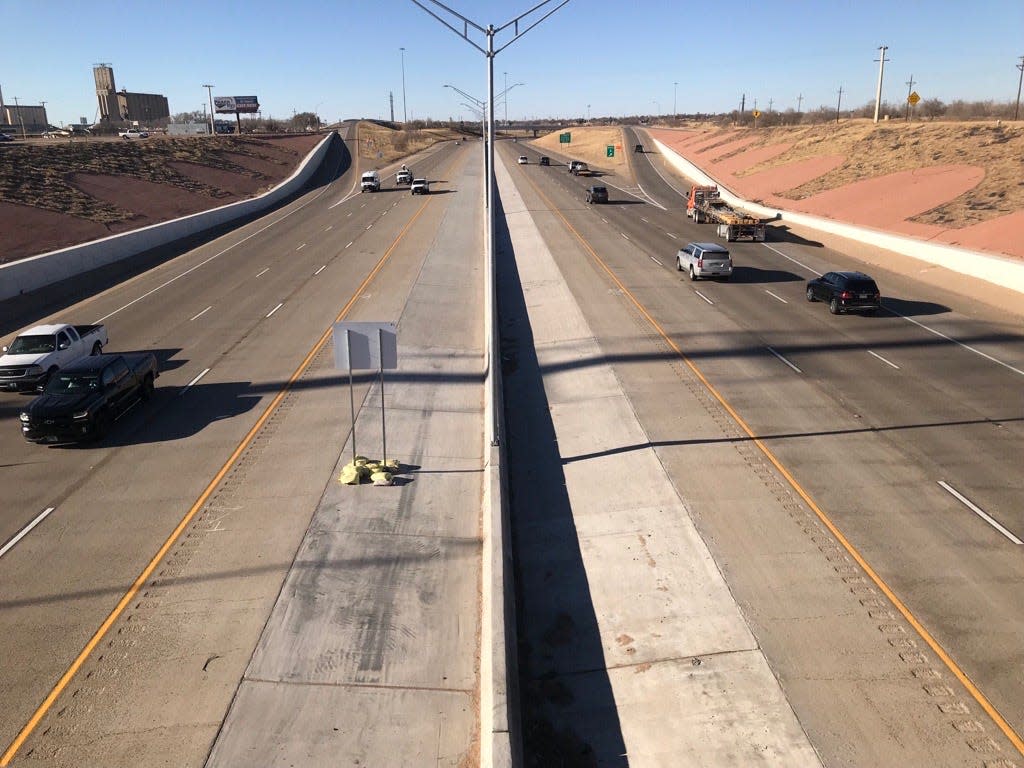I-27 Numbering Act passes U.S. Senate, heading to President Biden's desk

Legislation dictating how a future expansion of Interstate 27 will be named is headed to the White House for the President's signature after receiving bipartisan support from Congress.
The I-27 Numbering Act of 2023 received unanimous support from the U.S. Senate on Friday after it was passed by the U.S. House late last year. The Senate confirmed changes to the bill made in the House, which the Senate initially passed last spring.
The legislation will now go to Pres. Joe Biden's desk, officially designating the Ports-to-Plains Corridor between Laredo, Texas, and Raton, New Mexico as the future Interstate 27
The legislation simply names the previously designated corridor, which was not previously numbered when it was federally designated in 2022.
Stakeholders, including U.S. Senators Ted Cruz and John Cornyn, celebrated the milestone, which marks another win for the Ports-to-Plains Corridor.
"The Ports-to-Plains System is a critical 963-mile transportation corridor, and this legislation builds on the success we had in passing a bill to designate the Ports-to-Plains corridor in Texas and New Mexico as an interstate," Cornyn, R-Texas, said in a statement. "I appreciate Sen. Cruz’s leadership on this legislation, and I look forward to seeing the Ports-to-Plains corridor fuel more trade, more jobs, more energy security, and agricultural production for years to come.”
Cruz also released a statement, saying the bipartisan bill is a clear signal to the communities and businesses across Texas that Congress supports their work to develop the current highways to become part of the Interstate system.
"Communities across this route need better infrastructure because of the increasing demand to move goods and people, which is why I am proud to have secured this victory for the Lone Star State," Cruz said in the statement. "It means more jobs, greater economic development, and better transportation. This is fantastic news for Texas.”
John Osborne, Chairman of the Ports-to-Plains Alliance, said he was encouraged that the legislation received bipartisan support.
"The approval of route numbering for I-27 in Texas and New Mexico signifies a monumental step," Osborne said. "This corridor unites the nation's and Texas' strategic economic engines of agriculture production, energy, and international trade, supporting burgeoning population centers in West and South Texas."
The I-27 Numbering Act (S.992) delineates the route numbers for the future interstate highway, encompassing a vast expanse spanning Texas and into New Mexico. The allocated numbers for specific sections will facilitate streamlined navigation and development:
Laredo to Sterling City as I-27
Sterling City through Midland to Lamesa as I-27W
Sterling City to Lamesa as I-27E
Lamesa northbound through Lubbock to Amarillo passing through Dumas to Raton, New Mexico as I-27
The corridor north of Dumas as I-27N
Lauren Garduño, President/CEO of the Ports-to-Plains Alliance, said the legislation will play an important role in propelling the Ports-to-Plains corridor toward interstate standards.
"This numbering legislation championed by Congressman Arrington is critical for the corridor's evolution to interstate standards," Garduño said in a statement. "It unlocks funding avenues and will facilitate the incorporation of interstate signage as our corridor advances."
This legislative milestone follows the 2022 designation of Interstate-27 (I-27) when President Biden signed the Appropriations Bill (FY 2022), officially recognizing the Ports-to-Plains Corridor as an addition to the Interstate Highway System, according to previous reporting.
The previous Senate version of the bill, introduced by Cornyn and Cruz last March, designated the Lamesa spur as I-227 and the Dumas portion as I-327.
"There's a lot of information at the federal level that talks about how to utilize a three-number designation, and (the federal government's) original recommendation was that three-number designation," Garduño said in December. "But a lot of times you see a three-number interstate used on … spurs that are in metropolitan areas.
"We felt like the three-digit numbering system did not work for us there. … So being a rural corridor, we went ahead and used the east and west designation."
Garduño said work can now move forward with the Texas Department of Transportation on designing the future interstate, and he noted the Lubbock area could see a few new miles of I-27 as early as this year.
"(TxDOT) is finished with developing the segment south of Lubbock where the interstate ends at the loop," Garduño said. "They have completed the work to extend Interstate 27 about 4 1/2 to 5 miles south of there.
Sens. Cruz and Cornyn, along with Ben Ray Luján, D-N.M., and Martin Heinrich, D-N.M., introduced the bill in the Senate. U.S. Reps. Jodey Arrington, R-Texas, Henry Cuellar, D-Texas, August Pfluger, R-Texas, and Ronny Jackson, R-Texas, introduced identical legislation in the House.
This article originally appeared on Lubbock Avalanche-Journal: I-27 Numbering Act passes U.S. Senate, on to President Biden

